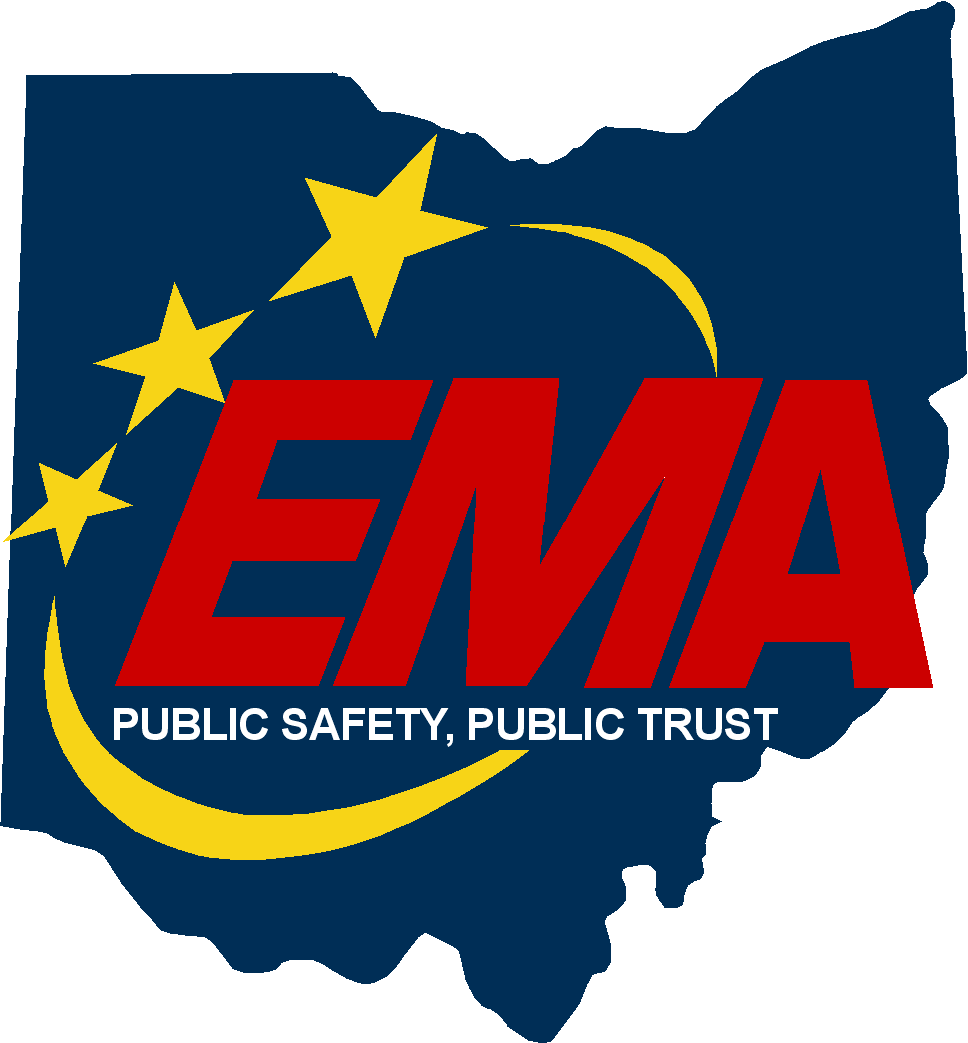- ▾ Other ShakeOuts ▾
- Alaska
- American Samoa
- Arizona
- British Columbia
- California
- Central U.S. (AL AR IA IL IN KS KY LA MO MS NE OH OK TN)
- CNMI
- Colorado
- Guam
- Hawaii
- Idaho
- Japan
- Montana
- Nevada
- New Mexico
- New Zealand
- NorthEast U.S. (CT MA ME NH NJ NY PA RI VT)
- Oregon
- Puerto Rico
- Quebec & Eastern Ontario
- SouthEast U.S. (DC DE FL GA MD NC SC VA WV)
- Texas
- Upper MidWest U.S. (MI MN ND SD WI)
- U.S. Virgin Islands
- Utah
- Washington State
- Wyoming
- Yukon
- Other Countries

Ohio
The Great Central U.S. ShakeOut is a multi-state drill spanning much of the central United States. This page has information for participants living in Ohio.
Points of Contact
Ohio Emergency Management Agency
Christen Swayer-Cunningham, State Earthquake Program Manager
Email: cbcunningham@dps.ohio.gov
Phone: (614) 799-3664
Website: www.ema.ohio.gov
Sandy Mackey, Public Affairs Chief
Email: smmackey@dps.ohio.gov
Phone: (614) 889-7150
FEMA Regional Earthquake Program Manager
Dan Ryan, FEMA Region V
Email: daniel.p.ryan@fema.dhs.gov
Phone: (312) 408-5500
Participants
people are currently registered to participate in this year's Great Central U.S. ShakeOut.
are from
Ohio
Number of Ohio participants in each category
View names of participants:
Ohio EARTHQUAKE HAZARDS
Although not considered a major risk hazard in Ohio, earthquakes have and do occur in the Buckeye State. According to the Ohio Seismic Network and the Ohio Department of Natural Resources’ Geological Survey, Ohio experienced three small-magnitude earthquakes in March of this year; four small earthquakes in 2012; and a total of 17 earthquakes in 2011, including the 5.8 magnitude earthquake that occurred in Virginia on Aug. 23.
Ohio is on the periphery of the New Madrid Seismic Zone, an area in Missouri and adjacent states that was the site of the largest earthquake sequence to occur in U.S. history. Four great quakes were part of a series at New Madrid in 1811 and 1812. These events were felt throughout the eastern part of the country and were strong enough to topple chimneys in Cincinnati. In March of 1937, western Ohio experienced a 5.4-magnitude quake that knocked down or damaged every chimney in Anna (Shelby County). So much damage was caused to the local school that it had to be torn down.
In January 1986, a 5.0-magnitude earthquake took place in Lake County, impacting most of northeastern Ohio. This was the first Ohio quake that caused injuries and to occur near a U.S. nuclear power plant. The 1986 quake ranks the third largest in the state.
Other significant earthquakes that impacted Ohio:
- 1980 - Kentucky had a 5.3 magnitude quake that was felt throughout Ohio and caused moderate damage in communities near the Ohio River in southwestern Ohio.
- 1998 - A 5.2-magnitude earthquake occurred in western Pennsylvania, just east of Ohio, and caused some damage in the epicentral area.
The causes of Ohio’s earthquakes, as with those throughout the eastern U.S. are poorly understood at this time. Those in Ohio appear to be associated with ancient zones of weakness in the Earth’s crust that formed during continental rifting and collision events about a billion years ago. These zones are characterized by deeply buried and poorly known faults, some of which serve as the sites for periodic release of strain that is constantly building up in the North American continental plate due to continuous movement of the tectonic plates that make up the Earth’s crust.
Seismic risk in Ohio is difficult to evaluate because earthquakes are generally infrequent in comparison to plate-margin areas like California. Nevertheless, earthquake preparedness is important. Taking simple precautions before an earthquake or any disaster occurs can help prevent injury or loss of life or damage to property.
- Make an emergency supply kit for your home and vehicles, and make a family communications plan to know who to contact during an emergency.
- Prepare the home by fastening shelves securely to walls; place large or heavy objects on lower shelves; brace overhead light fixtures and top-heavy objects; repair defective electrical wiring and leaky gas connections. These are potential fire risks.
- Locate safe spots in each room of your home, workplace and/or school. A safe spot could be under a sturdy table, desk, or against an interior wall away from windows, bookcases or tall furniture that could fall.
- Practice “Drop, Cover and Hold On” in each safe place. If you don’t have sturdy furniture to hold on to, sit or crouch on the floor next to an interior wall and cover your head and neck with your arms. Drop, Cover and Hold On is the appropriate action to reduce injury or death during earthquakes.
For additional information on earthquakes in Ohio, visit the following links:






